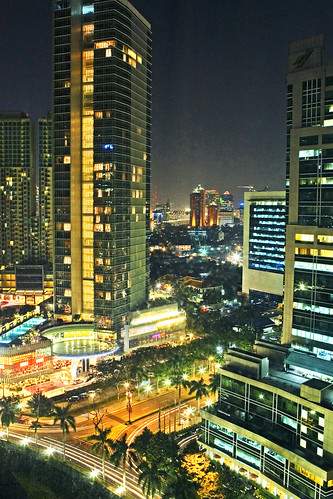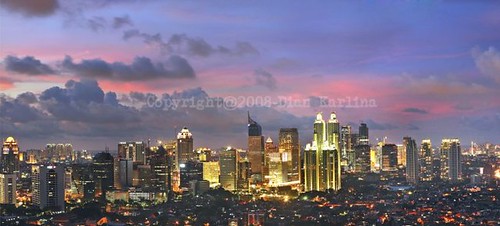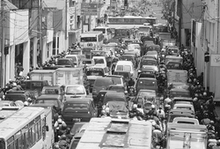Jakarta's city planning: What can we do and what can we expect?
City planning can be defined as a systematic attempt and action in the public domain to shape the future of urban areas. City planners are expected to collect and analyze data about every aspect of a city, including transportation, the environment, natural resources, land use, housing and the community, as well as economic development, manufacturing, commercialization, tourism and historic preservation. After the data has been collected and analyzed, city planners work with city stakeholders, including residents, to determine the plans for the city. The plans are to guide present and future city growth in order to create a better place to live. This is also what we should expect from Jakarta’s city planning. We should expect Jakarta to become a better place to live.
We have witnessed a Jakarta plagued by two major problems in the last few years: traffic congestion and floods. Despite several programs to alleviate traffic congestion and flooding, the severity of traffic and flooding in parts of Jakarta has not decreased. This is strong evidence that previous Jakarta city planning has failed to create a better Jakarta for its residents.
Many people believe the cause of traffic congestion is that roads don’t grow in conjunction with the increase in vehicle ownership. In Jakarta, vehicle ownership increases by 9 to 11 percent per year, but the growth of roads is less than 1 percent a year. But developing new roads is not the solution to traffic. When a new highway is built or a road is widened, it only alleviates traffic congestion for a short period of time. After a few years, any new highway fills with traffic that would not have existed if the highway had not been built. Such a phenomenon is called induced demand.
The viable solution for the traffic in Jakarta is to develop an integrated, reliable, accessible and affordable public transportation system. The poor public transportation system is the cause of the traffic congestion in Jakarta. Residents in Jakarta use their vehicles, either cars or motorcycles, as their primary transportation because the public transportation in Jakarta is unreliable, inaccessible and expensive. That’s why cars and motorcycles crowd Jakarta’s streets. In 2009, the number of modes of public transportation was only about 1.5 percent of the total number of vehicles in Jakarta.
The Jakarta administration failed to develop an integrated, reliable, accessible and affordable public transportation system and it caused the chronic traffic in Jakarta. Jakarta was late to develop a Mass Rapid Transit (MRT). For at least 20 years, the MRT proposal was discussed by the government and was seen as a possible bonanza for corrupt politicians and contractors before a $1.6 billion loan was secured from the Japanese International Corporation Agency in 2009.
Other metropolitan cities in Southeast Asia that are smaller than Jakarta have developed their own MRTs for years, including Manila (1984), Singapore (1987), Kuala Lumpur (1995) and Bangkok (2004). The first track of the MRT project is expected to connect the Hotel Indonesia traffic circle and Kota in 2016. Jakarta needs to integrate this expensive project with the TransJakarta Busway, the public minibuses Metromini and Kopaja, public minivans and the city bus. The next step, which is critical for Jakarta’s success in easing traffic, is to convert car riders and motorcyclists into public transport riders and MRT riders.
In addition to developing the MRT, Jakarta needs to implement other innovative methods to ease traffic congestion, including electronic road pricing, shuttle services, carpool matching services, telecommuting, downzoning and better parking management in downtown areas. Jakarta also needs to develop more districts with a mix of land uses and an interconnected network of streets designed to encourage walking and bicycling.
Floods are not a new problem for Jakarta. Jakarta is hit by deadly floods every year. The annual floods inundate many parts of Jakarta and paralyze the center of Indonesia’s economy. The annual floods kill many people and cause thousands of Jakarta’s residents to flee their homes. In the last four years, the deadly annual floods occurred in the month of February when rainfall in Jakarta is at its highest.
In February 2010, annual flooding from the overflowing Ciliwung River killed at least two people and displaced more than 1,700 in the Kampung Melayu, Bukit Duri and Bidaracina areas. This year’s floods in Jakarta inundated more areas than last year’s floods, despite less rainfall and the completion of the East Flood Canal.
More recently, thousands of commuters were stuck for hours in Jakarta’s gridlocked streets because of three hours of heavy rain that caused floods and paralyzed roads and train traffic on Oct. 25. At least two people were also killed by the flood.
The annual floods in Jakarta are strong evidence that Jakarta has not been able to sustainably accommodate its growth. Two centuries ago, the Dutch colonial government built a system of canals to protect the city’s population, which was then 500,000. Jakarta, which lies in a lowland area with 43 lakes and 13 rivers, relies on the canal system to prevent flooding.
Today, Jakarta is a megacity with a population of nearly 10 million within the city’s boundaries and more than four million in neighboring areas; yet, it still relies on the same canal system to avert flooding.
Rapid urbanization in Jakarta must be slowed. One possible way to reduce urbanization in Jakarta is to redistribute the central functions of Jakarta to other parts of the nation, and to strengthen other urban agglomerations in Indonesia to pull urban growth away from the capital.
Water catchment areas, green areas and wetlands that have been converted into urbanized areas need to be re-functionalized as non-urbanized areas. In the 1970s, green areas made up between 40 and 50 percent of Jakarta and have been shrinking ever since. Green areas in Jakarta in 2010 account for only 9.3 percent of the city’s area.
(This article also appeared at The Jakarta Post on December 20, 2010)






1 comment:
For many of us living or traveling frequently in Jakarta we know well the problems you have identified. Certainly the mass transit is essential, but as you have pointed out,
"Jakarta also needs to develop more districts with a mix of land uses and an interconnected network of streets designed to encourage walking and bicycling."
This is a point that people can see, but cannot put nicely into words like you have and set it as an objective or "mission statement" for the city planning and developers. I summarized some points in a couple of recent blogs about Busway and Epicentrum. (http://jiwastudio.blogspot.com/2011/10/100-jakarta-busway-catalyst-for.html) and (http://jiwastudio.blogspot.com/2011/10/110-rasauna-epicentrum-jakarta.html)
For me real urbanization is hand in hand with the mass transit system to make the city truely pedestrian friendly and only then will the traffic problem be reduced.
Flood control actually goes hand in had with urbanization such that green drainage areas are properly maintained as complements to dense urban development and serves as recreation areas that interconnect the whole city. See my Blog about Singapore's example. (http://jiwastudio.blogspot.com/2011/10/50-waterways-thread-of-development.html) Singapore is not perfect and of course there is still some flooding recently in Singapore but not as often as some other cities in Asia.
In the end the governments supported by city planners are the ones who shape the "vision of the city and kind of lifestyle" it will have but as mentioned in you other blog, this is not where the planning ends, but it REALLY BEGINS, and to execute is the real hard work, but also as planners we enjoy the satisfaction of success!
In the case of Jakarta it will take about a dozen talented and dedicated planners to start now and spend their life working toward this goal and if they show enough short successes, gain enough influence and respect a lot can happen.
Jiwa Studio
Post a Comment